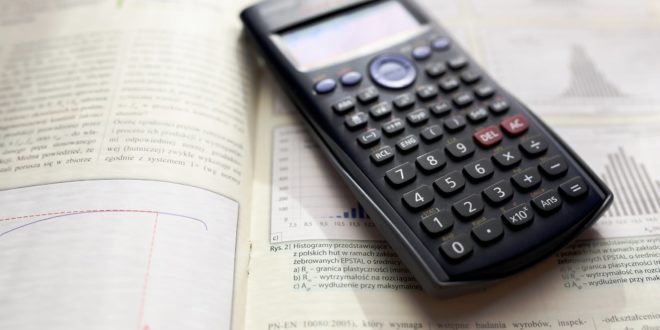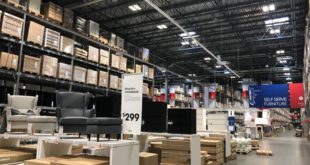Do Lower Air Pressure Dry Pipe Systems Deliver Water Faster Than Higher Air Pressure Systems?
Introduction
Dry pipe sprinkler systems are filled with pressurized air or nitrogen, which make them particularly useful in spaces subject to freezing temperatures. But because the pipe remains free of water until a fire is detected, the speed of water delivery is a concern. It is commonly believed that dry pipe systems with lower air pressure provide faster water delivery over traditional higher air pressure systems; however, test results show that this is not always the case. To understand why, it’s important to consider how water delivery time is affected by different valve designs and their system air pressures.
There are two primary types of valve technologies available on the market today: Differential clapper-type valves and differential latch-type valves.
Clapper-type valves work by using a difference in exposed surface area of the clapper. They require an approximate 1:6 differential of air to water pressure (exact ratios may vary by manufacturer). System air pressure holds back water on the opposite side of the valve clapper until the air pressure drops to where water pressure can overcome the system air pressure. Systems using clapper-type valves are traditionally higher air pressure systems.
Differential latch-type valves typically use a latch to hold a clapper closed. They require a lower pressure differential and, therefore, lower system air pressure. When air pressure drops, an actuator trips and permits the latch to release the clapper and allow water to flow into the system. The assumption is that the valve will trip faster if system air pressure is lower, and the water transition across the system will be quicker for a short water delivery interval.
NFPA 13, Standard for the Installation of Sprinkler Systems, requires water delivery within certain time limitations as a function of system volume. The premise is that quicker water delivery will enhance fire control ability, as water can be delivered before the fire sprinklers are overwhelmed by the increasing fire size.
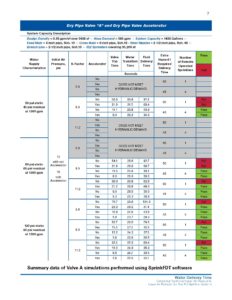
To demonstrate whether lower system air pressure results in faster overall water delivery times, test simulations compared the performance of clapper type and latch type valves. The purpose of this study was not to prove one technology is better than the other, but to determine whether it is correct to assume that a lower pressure design is faster. Although the simulation was limited to a single system, sufficient evidence was produced to disprove that assumption.
Simulated Test Comparisons
Using its SprinkFDT fluid delivery time software, Johnson Controls simulated water delivery tests with two differential latch-type valves, “Low Pressure Valve A” (see Figure 1) and “Low Pressure Valve B” (see Figure 2), alongside the TYCO Model DPV-1 differential clapper-style dry pipe valve (see Figure 3). SprinkFDT is a UL-listed software program for calculating fluid delivery time. The software accurately calculates dry valve trip time and water delivery time to the remote sprinkler(s). A tree-style system was simulated with SprinkFDT using three common water supply values for static and residual pressure at 1,300 gallons per minute for each one. (See Figure 4.)
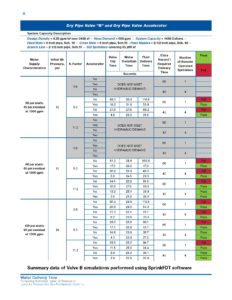
The simulations determined: (1) pass-fail rates, and (2) water delivery times with and without an accelerator. A tree-style system was simulated with SprinkFDT using three common water supply characteristics for static and residual pressure at 1,300 gallons per minute. The design area used to first determine whether the systems could be hydraulically validated was 2,438 ft2, derived from an initial square footage of 2,500 ft2, adding 30 percent increased square footage for a dry system and deducting 25 percent square footage for 286°F sprinklers. On the basis of an NFPA 13 classification of “Extra Hazard I,” the following variables were examined using sprinklers with K-factors of 5.6, 8.0 and 11.2: (1) all K-factors with and without an accelerator and (2) all K-factors with the operation of one and four sprinkler heads.
(1) Pass-fail rates
Pass/fail results were based on NFPA 13 water delivery requirements for dry pipe systems. The comparison validated that differential clapper-style valves in higher air pressure systems can meet water delivery times, where, in the same circumstances, differential latch-type valves in lower air pressure systems cannot. The differential-style DPV-1 valve met water delivery times without an accelerator in 8 of 12 simulations, and with a TYCO VIZOR electronic accelerator, 12 of 12 simulations. The total was 20 passes in 24 simulations.
Valve A met water delivery times without an accelerator 6 of 12 times, and 10 of 12 simulations with an accelerator. The total was 16 passes in 24 simulations. Valve B met water delivery times without an accelerator only 3 of 12 times, and 12 of 12 simulations with an accelerator. The total was 15 passes in 24 simulations.
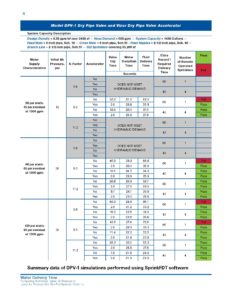
(2) Water delivery times without and with accelerators
In the 12 simulations without accelerators, the higher air pressure DPV-1 valve tripped faster than both lower air pressure valves. The water transit times (the time from valve trip to water delivery) for the higher air pressure DPV-1 valve were also comparable to those of the lower air pressure valves, with faster times in 6 of 12 simulations. Without an accelerator, the DPV-1 delivered water faster than both low pressure valves in 12 of 12 simulations.
In the 12 simulations with an accelerator, the DPV-1 paired with the TYCO VIZOR electronic accelerator always met the water delivery time requirement. In measuring water transit times to determine the impact of lower versus higher system air pressure, the data show the DPV-1 valve had a faster transit time in 6 of 12 simulations. With the VIZOR electronic accelerator, the DPV-1 valve had a faster overall water delivery time in 12 of 12 simulations, which can in part be attributed to the faster trip time of the electronic accelerator.
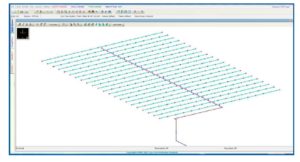
Conclusion
The simulation data provided by SprinkFDT indicates the traditional higher air pressure system using the TYCO Model DVP-1 dry pipe valve, with or without the VIZOR accelerator, provided quicker water delivery for each variable than Valve A and Valve B. When measured against the NFPA 13 pass/fail criteria, the traditional high air pressure system outperformed the low air pressure systems for this piping arrangement.
This comparison demonstrates that assuming lower air pressure dry systems will provide quicker water delivery over traditional higher air pressure systems is unwarranted. The results also indicate that water delivery time in a dry pipe system is affected not only be air pressure, but also by water supply, system volume, system design, sprinkler head sizes and the use of an accelerator. Consequently, a low-pressure valve should not be assumed to be a fool-proof solution for meeting water delivery times or deciding not to employ an accelerator. Many factors must be carefully considered when selecting a differential-style or a low-pressure valve for a dry pipe system design.
For the complete test results and methodology, view the white paper at tycofpp.com/valves.
ABOUT THE AUTHORS: Manuel Silva is chief engineer, water and mechanical, and Roger Wilkins is senior manager, test engineering and facilities, at Johnson Controls.
 Sprinkler Age A Publication of the American Fire Sprinkler Association
Sprinkler Age A Publication of the American Fire Sprinkler Association
